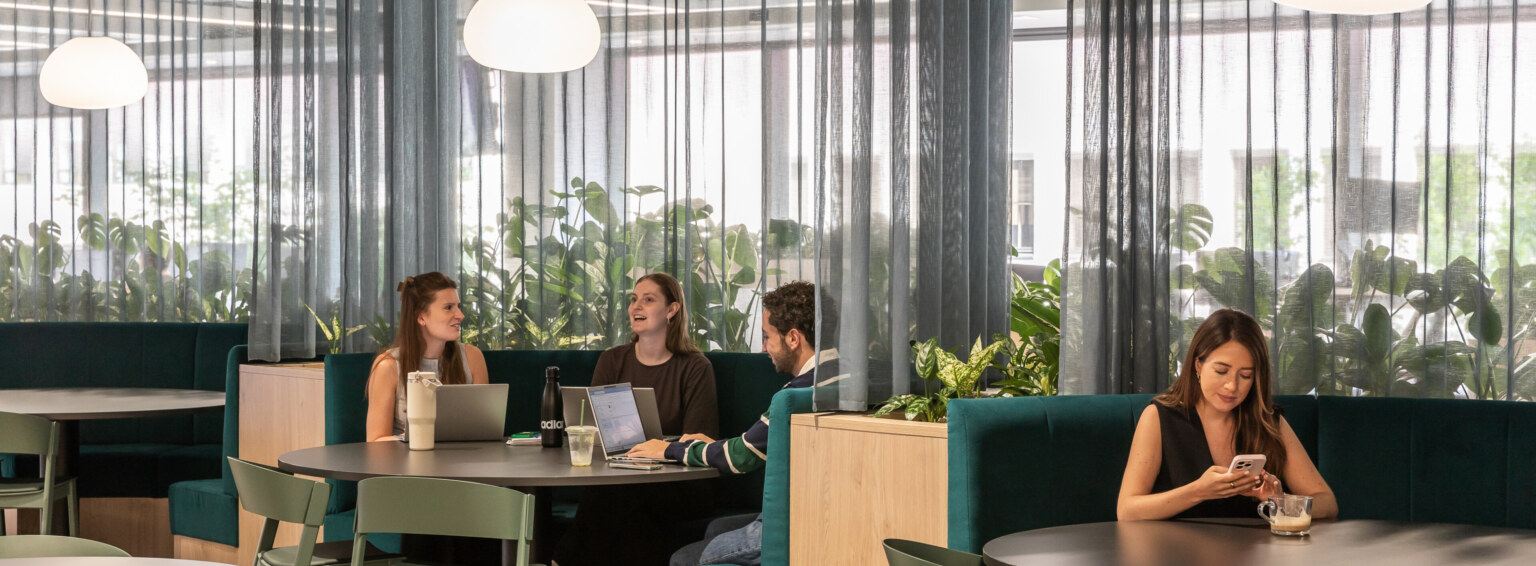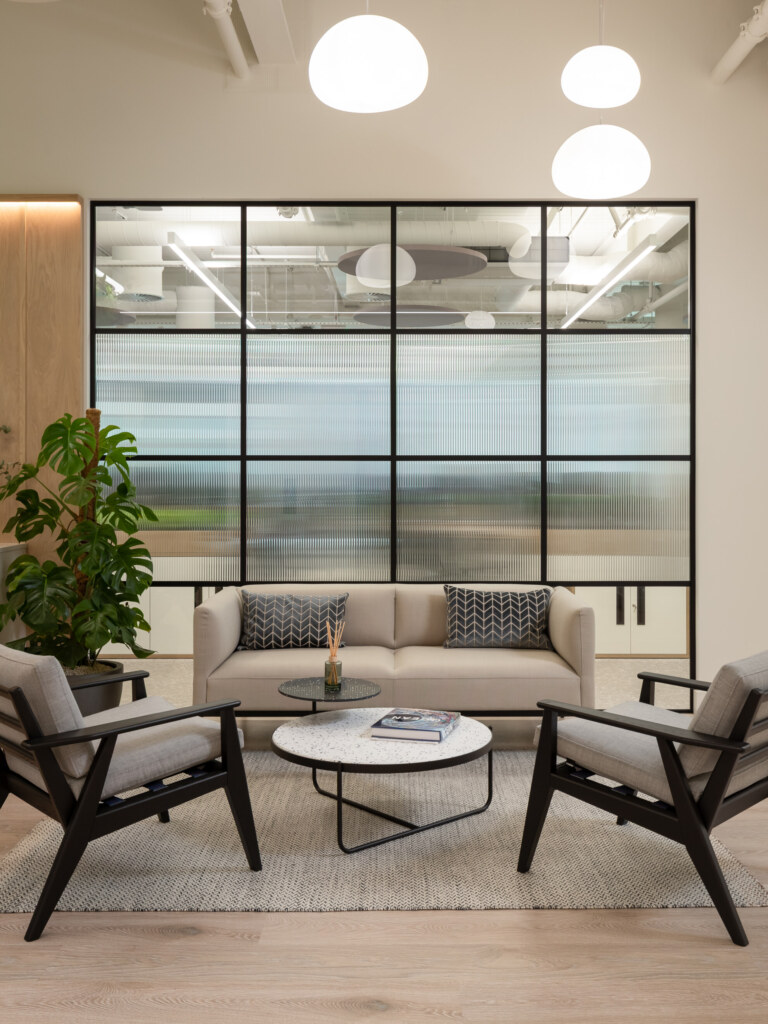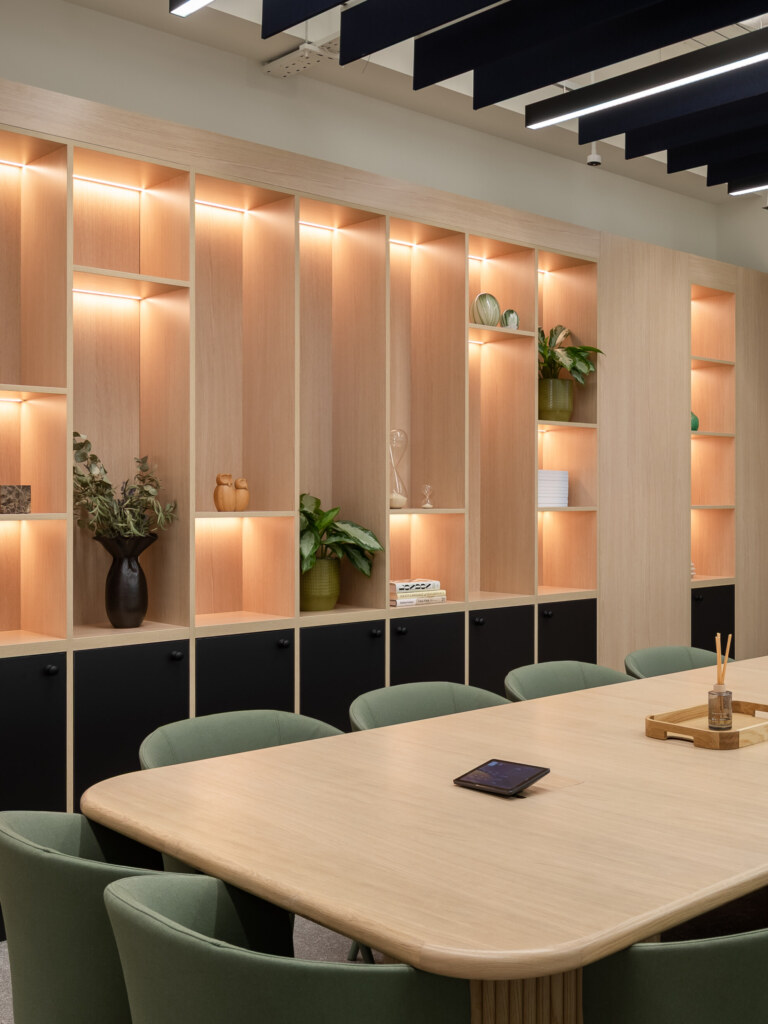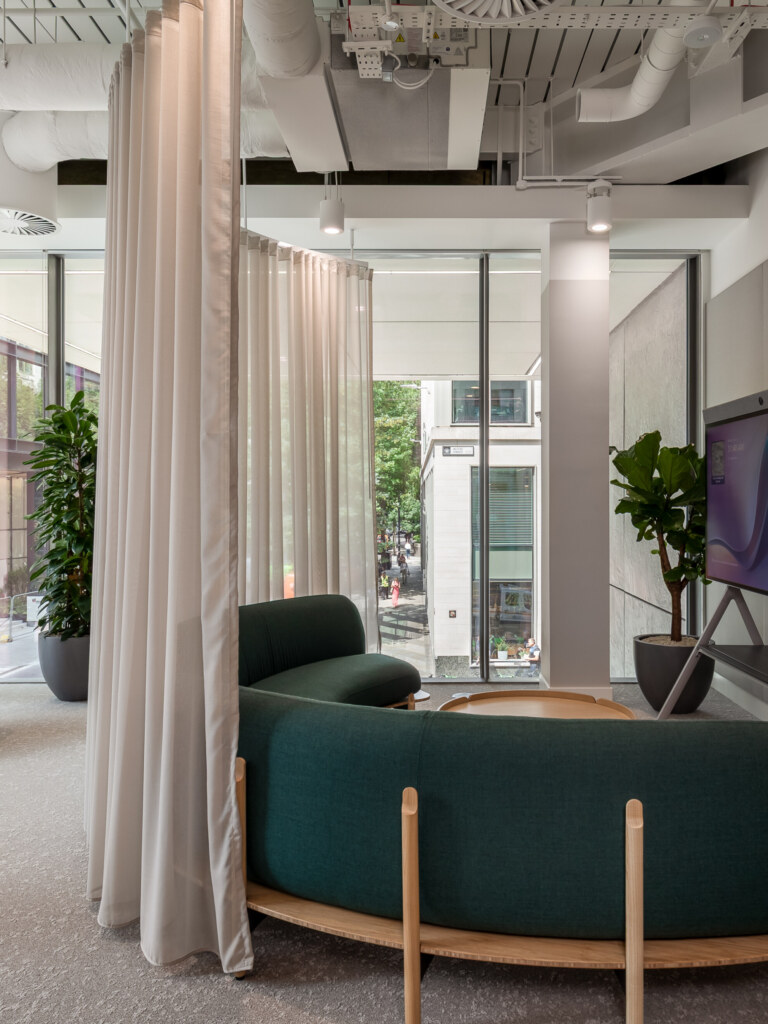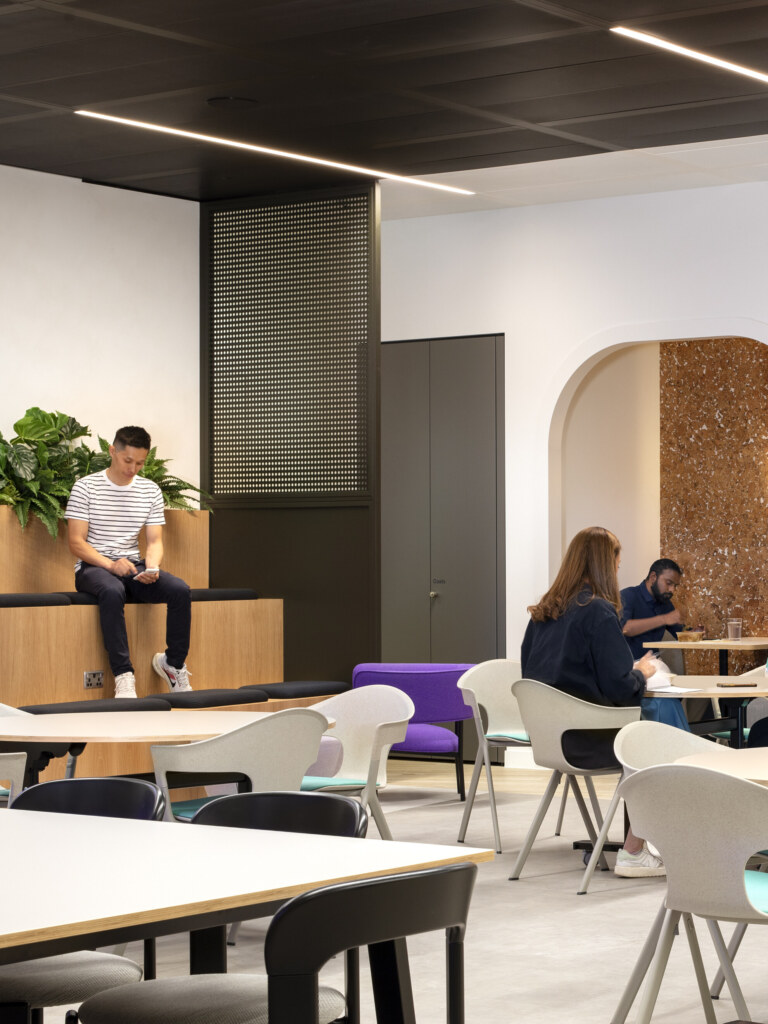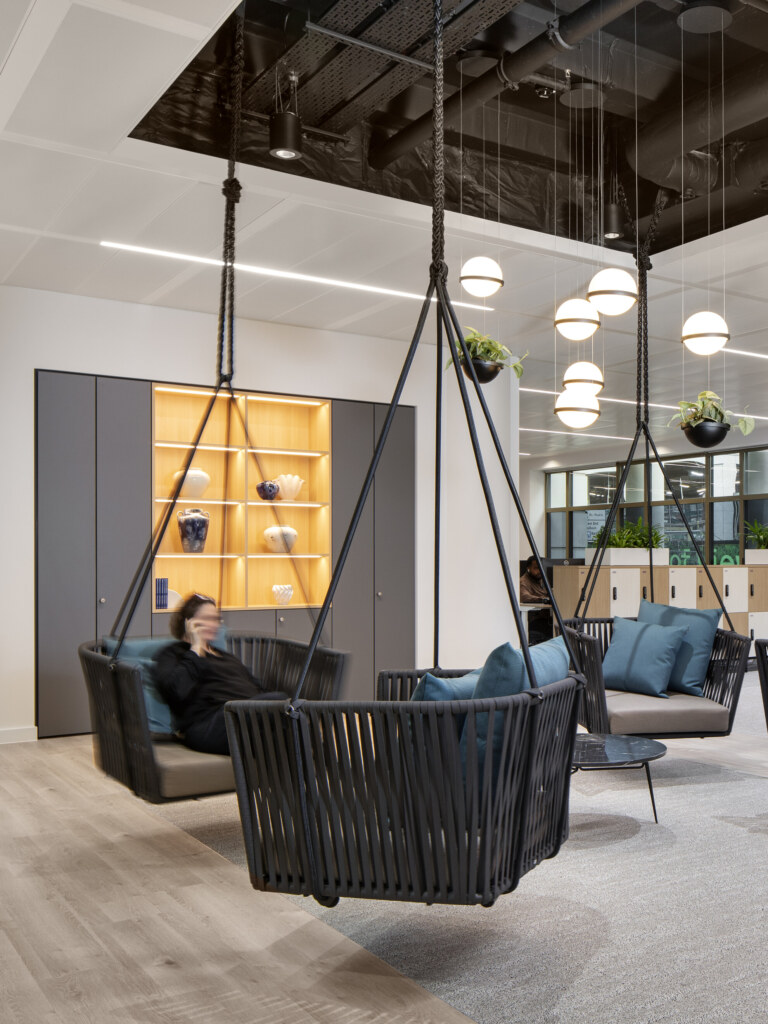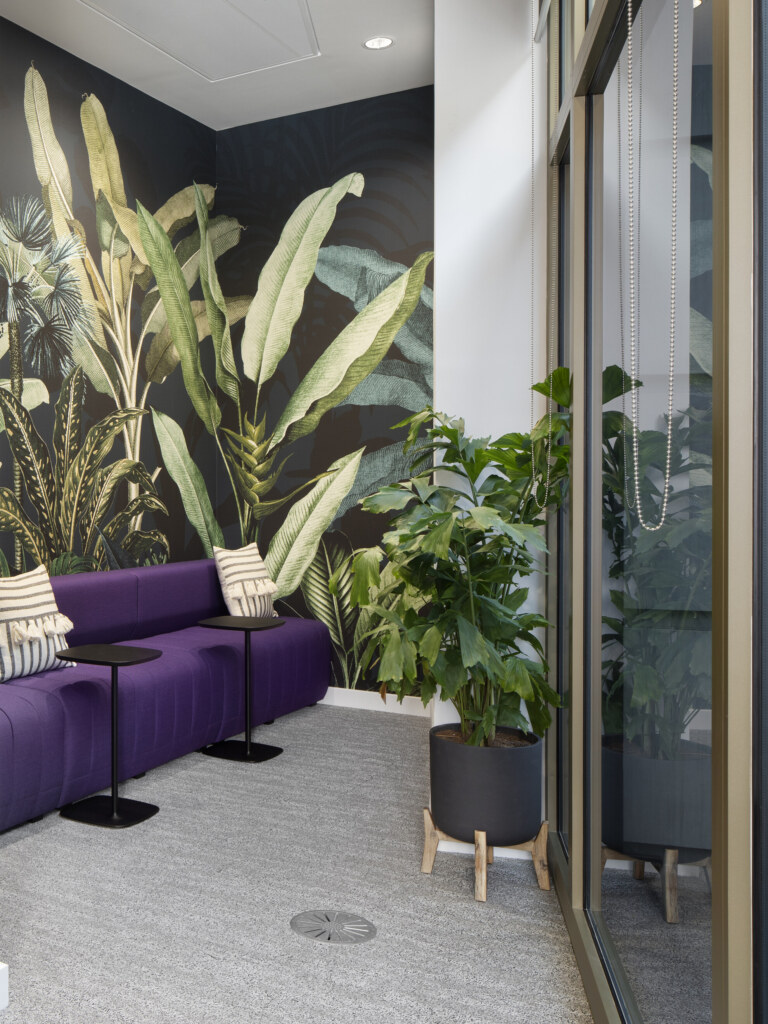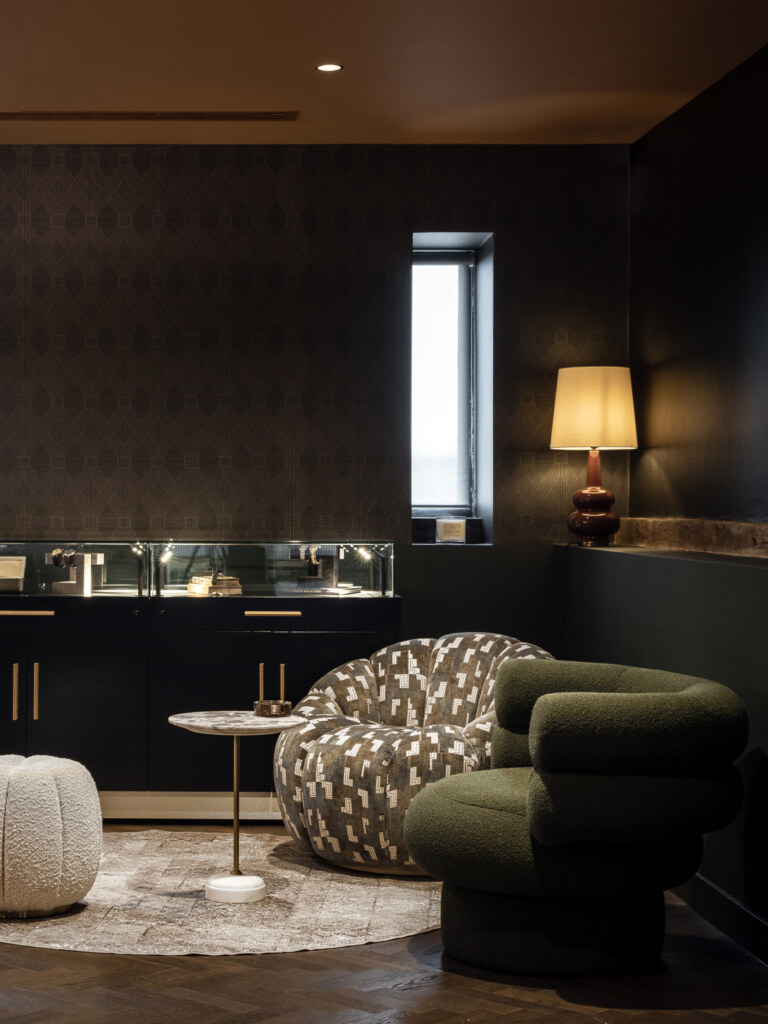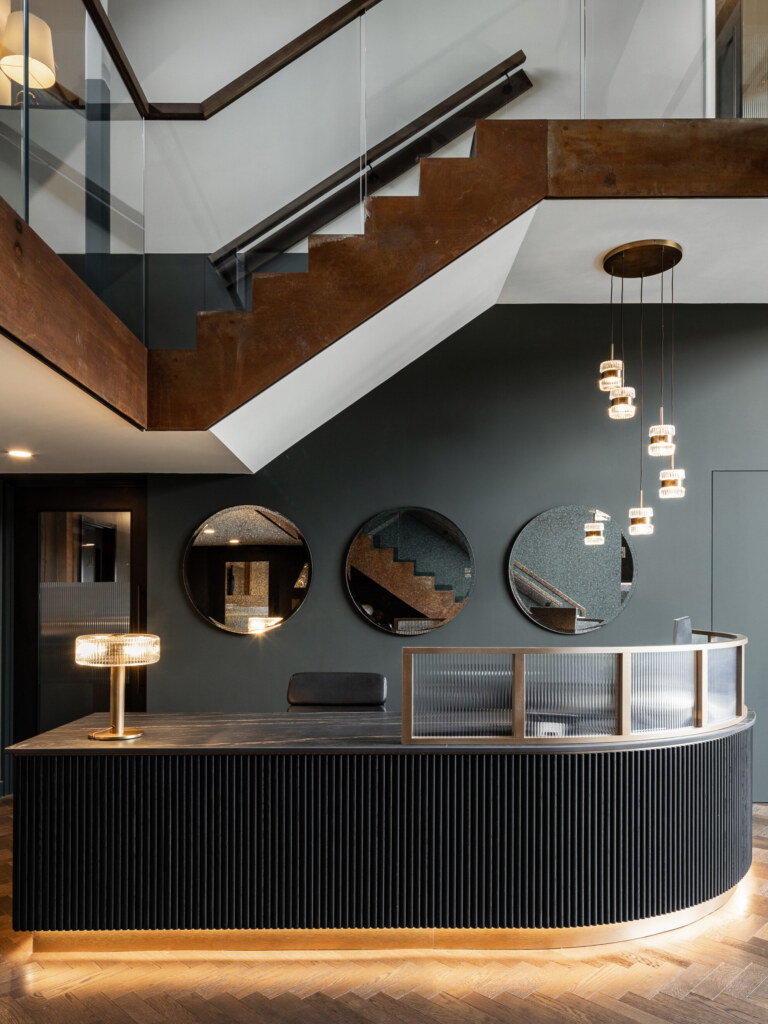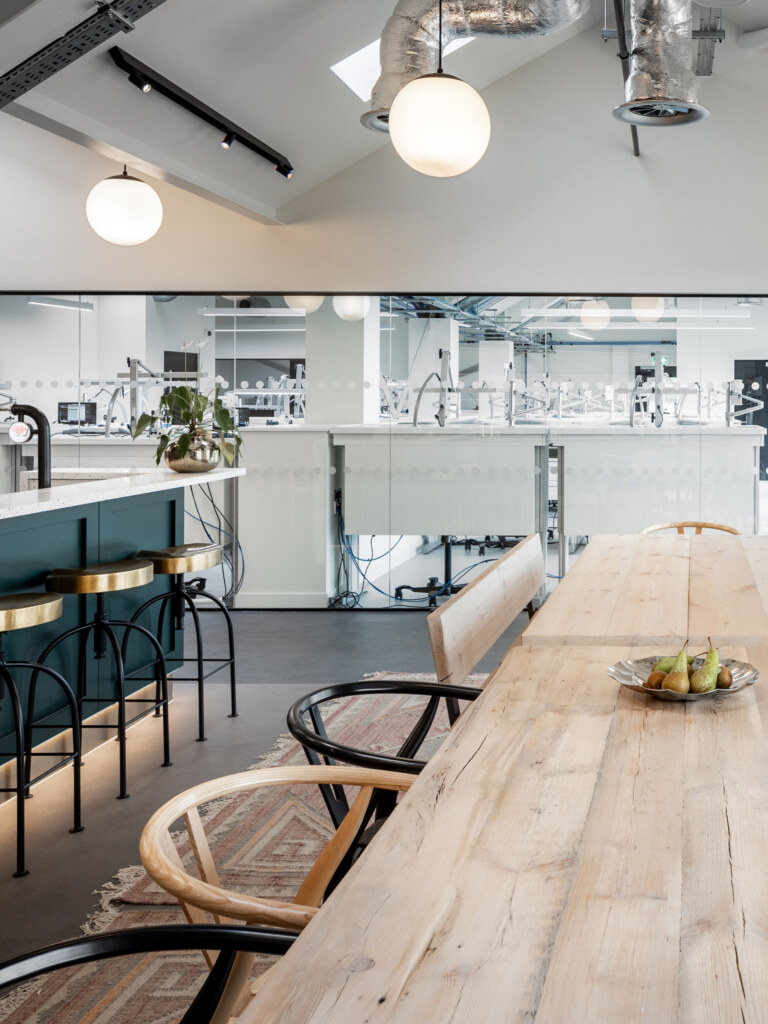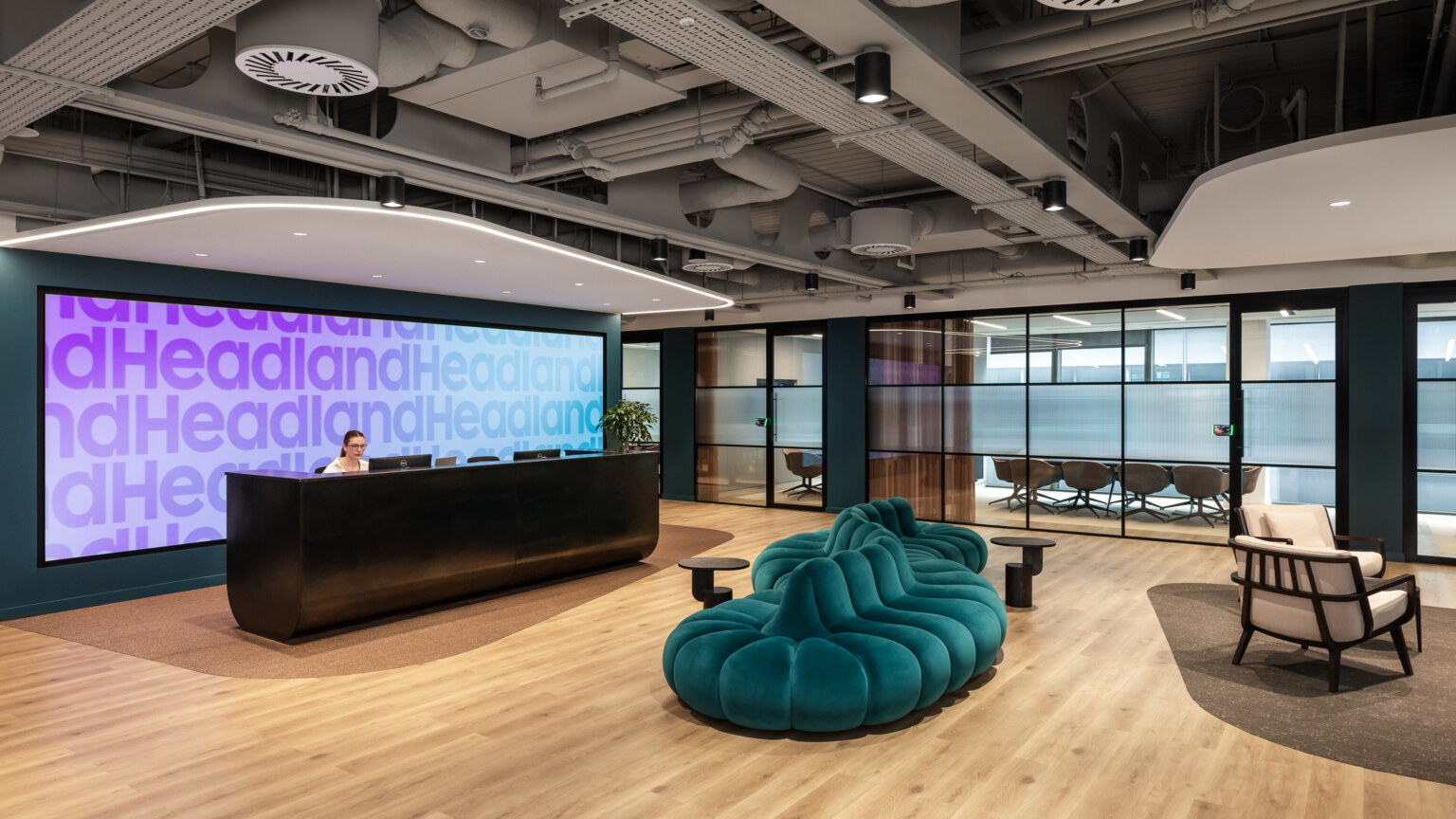-
Today’s corporate office is a key expression of company culture, purpose, and vision. Yet many offices remain locked in a pre-hybrid design mindset, with rows of desks and static meeting rooms that no longer match how teams operate today.
If workplaces fail to evolve, they risk disengagement, inefficient use of space, and the gradual fading of company culture. Today’s workforce expects more from their time on-site, especially those who have the option to work from different locations. The preference is now for spaces that energise, connect, and support them to do their best work.
We’ve seen firsthand—through hundreds of workplace transformations—that the most successful corporate offices are strategically designed to meet today’s business needs while being adaptable to tomorrow’s. Here are seven key trends shaping the future of corporate office interior design.
-
1. Hybrid-ready workplaces as the new standard
Hybrid working is here to stay, and offices must give people a reason to come in beyond simply occupying a desk for the day. This is even more apparent when you factor in that, on average, around 20% of desks are used for less than an hour a day, highlighting how often traditional workstations go underutilised. The most effective spaces are intentionally zoned to balance collaboration, focus, and connection, providing choice for how people work when they’re on-site.
-
That might mean reducing underused desk banks and replacing them with collaboration hubs for brainstorming, flexible meeting rooms that can be reconfigured at short notice, and quiet focus areas for deep work. Zoning also supports more efficient space usage, ensuring that when employees are in the office, they can prioritise the areas of their day-to-day that are difficult to replicate remotely—like building relationships, running workshops, or solving complex problems face-to-face.
Small design elements can have a big impact. For example, creating visual separation between zones or using furniture to signal the intended purpose of a space will further encourage people to use the office in more purposeful ways. This layered approach helps offices feel more dynamic and, importantly, responsive to daily needs.
-
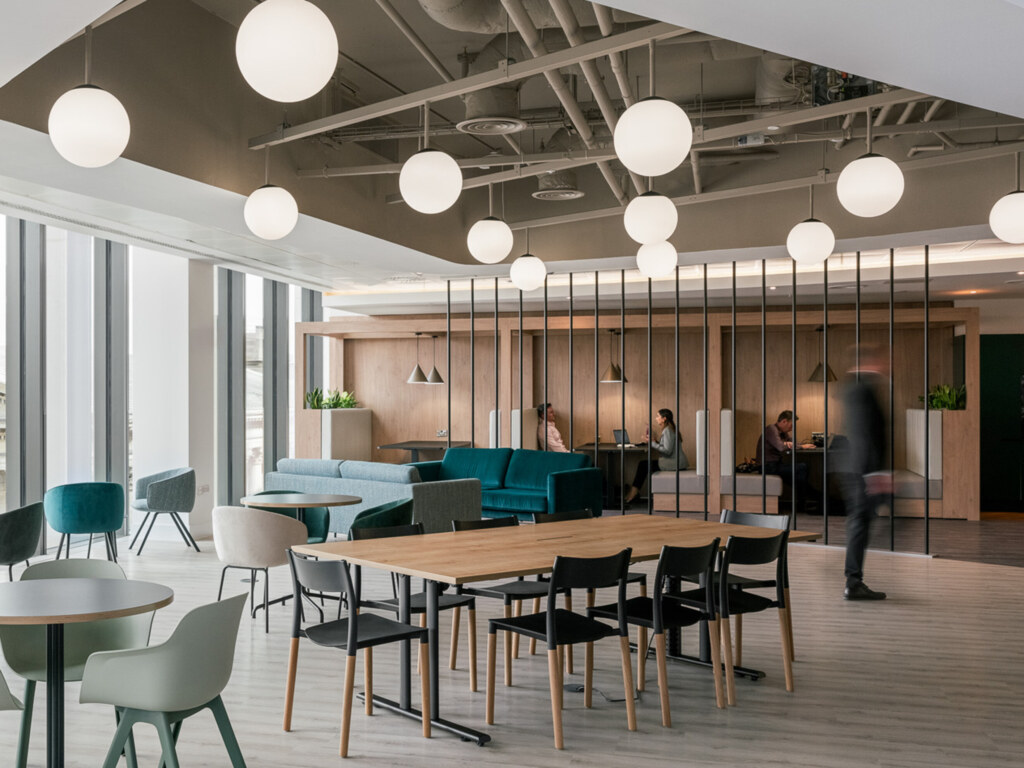
-
“Providing choice is essential. But there’s no point in having choice unless you’re encouraged to use spaces, and ultimately, it’s not just about having choice between social and collaboration and focus, but it’s the degree of choice within those areas.”
Dominic Dugan, Group Creative Director
Oktra
-
2. Technology as an invisible enabler
Technology should empower employees without dominating the design, acting as a seamless part of the workplace experience rather than an intrusive layer. The best corporate offices integrate AV tools, occupancy sensors, and environmental controls in ways that blend naturally into the architecture, supporting productivity without creating visual clutter
-
Smart buildings take this a step further, using real-time data to optimise space usage, improve energy efficiency, and adjust environmental comfort as needed. This gives teams the insight to make smart choices about layouts or resources while steadily driving better sustainability outcomes. For hybrid meetings, thoughtful spatial planning combined with high-quality AV integration reduces friction, ensuring conversations flow naturally between in-room and remote participants.
We’ve also seen the value of embedding tech-enabled meeting suites into social and multi-use spaces, making it easy for teams to shift from casual conversation to fully connected video collaboration within moments. In some cases, integrating wireless charging, touch-free controls, and intuitive booking systems has really boosted usability, encouraging more spontaneous yet productive interactions.
-
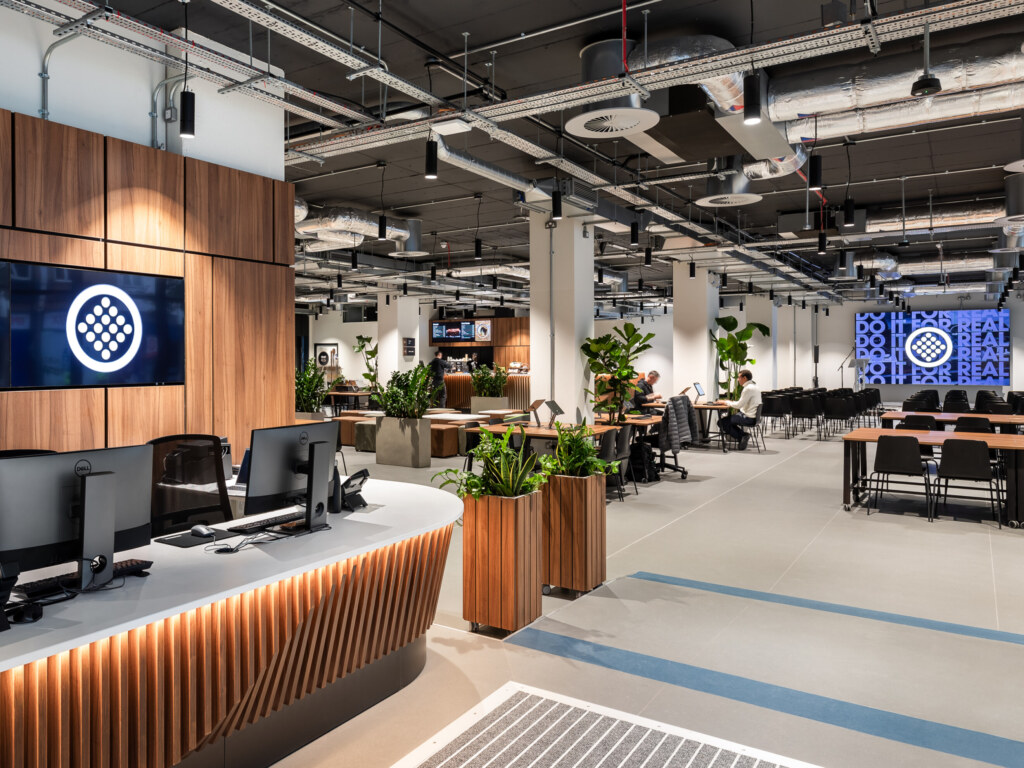
-
3. ESG-driven and sustainable design
Corporate offices are now key vehicles for delivering environmental, social, and governance (ESG) goals, with their design choices having a tangible impact on a company’s footprint and reputation. A commitment to sustainable interior design can directly reduce operational costs, support long-term resource efficiency, and send a strong signal of corporate responsibility to employees, clients, and stakeholders.
-
From reclaimed finishes that extend the life cycle of materials, to modular and adaptable furniture systems that can be easily reconfigured or reused, circular design principles are becoming increasingly important in the planning process. Certifications such as BREEAM, LEED, and WELL not only benchmark performance but also provide a credible framework for communicating environmental achievements to the market.
Prioritising reuse can significantly influence sustainability outcomes. In the case of Principles for Responsible Investment’s office move, much of the original fit out was retained—including desks, chairs, and loose furniture—while the shell and core were exposed to limit the need for new materials. This result is a low-carbon workspace that feels fresh and contemporary without compromising environmental responsibility, proving that reuse can be both a practical and design-led choice.
-
4. Wellness-centred environments
Wellbeing plays a critical role in helping people think clearly, stay motivated, and feel happy at work. Many modern offices now make wellness a central design priority, shaping environments that actively support relaxation and reduce stress while also keeping people comfortable and engaged throughout the day. A thoughtfully designed workplace can also reduce the risk of burnout, encourage healthy social interaction, and contribute to a stronger sense of job satisfaction.
-
In practical terms, this can involve allowing more natural light to enter the space, incorporating plants and other biophilic features to create a connection with nature, improving air quality through effective ventilation, reducing distracting background noise to support focus, and providing designated areas for rest and recovery—such as wellness rooms, meditation spaces, or quiet corners. The placement of these spaces is just as important as their design. Locating them away from busy hallways or high-traffic zones makes them more peaceful and conducive to recharging.
Some companies go further by focusing more specifically on how these spaces look and feel. Adaptable furniture, calming colour palettes, and soft materials are just a few examples of design features that can help to cultivate a restorative atmosphere.
-
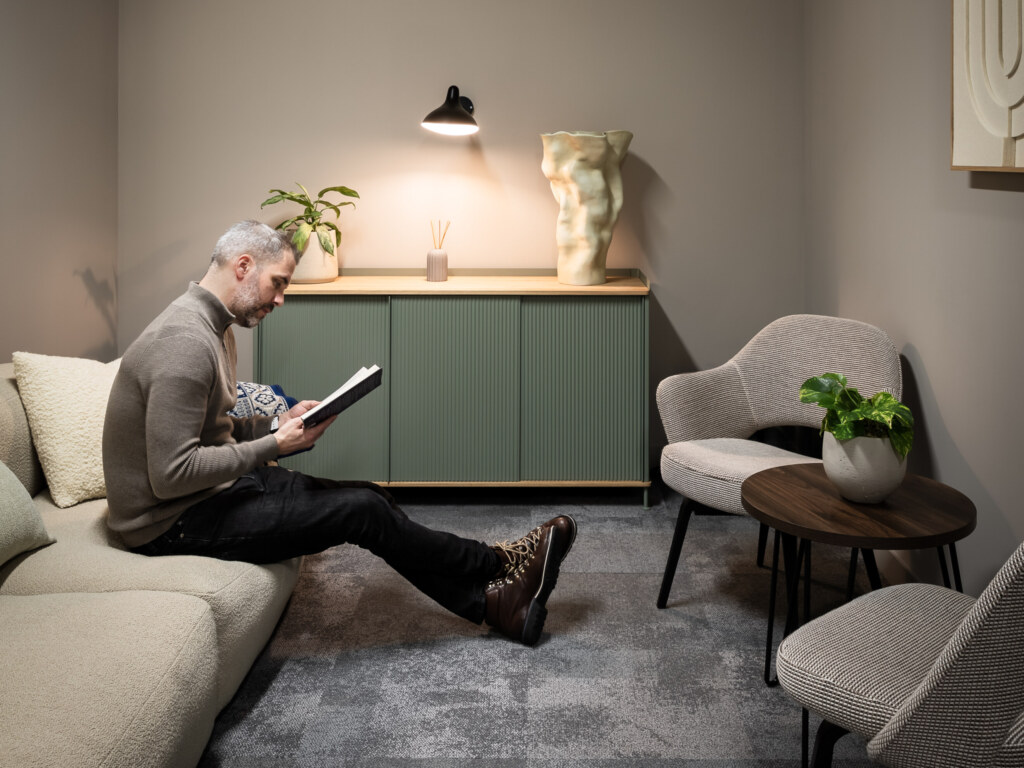
-
5. Neuroinclusion and accessible design
The findings from Oktra’s Inclusive Workplace Design Report underline that there’s still a significant gap between employee expectations and the current state of workplace inclusivity. Designing for a range of physical, sensory, and cognitive needs ensures every employee can fully participate, contribute, and feel a sense of belonging in the workplace.
-
Practical examples may involve creating acoustic privacy so people can focus without distraction, using sensory-friendly finishes that avoid glare or harsh textures, or providing varied lighting levels to accommodate different sensitivities. These design decisions, such as incorporating considerations of neurodiversity, transform a workplace that looks great, into an environment that actively supports its users’ needs.
Paysafe’s London office project highlights how zoning strategies can support neurodiverse employees. The design created acoustic separation between collaborative and focus areas, while offering a variety of seating types to match different comfort and sensory preferences. Additional elements like colour cues for navigation and quieter breakout spaces helped make the office more adaptable and welcoming.
-
6. Brand storytelling through space
Your office is one of the most powerful storytelling tools available to you, acting as a tangible expression of your brand identity. Beyond simple visual branding like logos and colour palettes, corporate office interior design can physically and emotionally convey a company’s mission, values, and personality to everyone who enters.
-
For example, material choices can signal sustainability commitments by using reclaimed timber or recycled finishes, while spatial layouts can reflect how teams are structured and collaborate day to day. Curated artwork, displays of company milestones, and design features that tie into your history can help weave a narrative that is felt as much as it is seen. Even small design decisions—like the placement of a feature wall or the textures used in communal areas—can strengthen that story.
The aim is to make the space instantly recognisable and emotionally resonant for employees, clients, and visitors alike, creating a memorable environment that reinforces connection, pride, and purpose every time someone steps through the door.
-
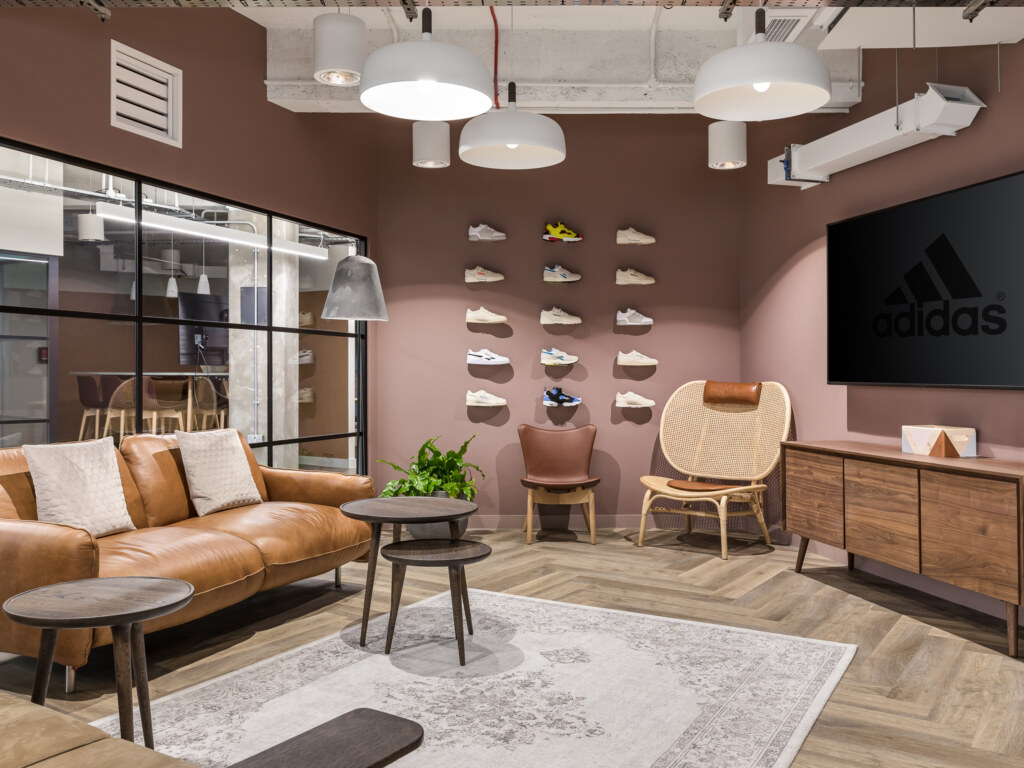
-
7. Hospitality-led workplace experiences
Hospitality-led design turns the workplace into a destination rather than simply a place to complete tasks. Lounge-style breakout areas, in-office cafés, concierge desks, and soft seating arrangements can reshape the day-to-day experience by making time in the office feel comfortable, social, and energising.
-
These hospitality-inspired features are improving the employee experience, offering amenities that reflect the same level of care and service people expect in hotels or restaurants. They also create multiple reasons for employees to choose the office over working from home—whether it’s grabbing coffee with a colleague in a relaxed café space, holding an impromptu meeting in a lounge area, or starting the day with a warm welcome from a concierge.
We’ve seen clients adopt café-style work zones to encourage informal collaboration and spark spontaneous conversations that might not happen in a formal meeting room. Reception areas are also being reimagined to double as vibrant social hubs where visitors and employees can connect over coffee, host casual meetings, or attend networking events, transforming what was once a simple entry point into a lively and functional part of the workplace.
-
Bringing it all together
Corporate office interior design is now seen as a strategic practice, focused on creating spaces that clearly reflect a company’s goals, strengthen its culture, and flex with the changing ways people work.
-
When offices are designed to balance adaptability with a clear sense of purpose, they can become places that naturally support strong business performance, encourage collaboration, and deepen employee engagement. This kind of design thinking ensures the workplace remains relevant and effective today, while building in the capacity to evolve and grow with the organisation in the years ahead.
The corporate office of the future will be intentionally human-centred, informed by real-time data, and guided by a clear sense of purpose. By designing with these principles in mind, organisations can create workplaces that inspire, connect, and remain resilient in the face of change.
-
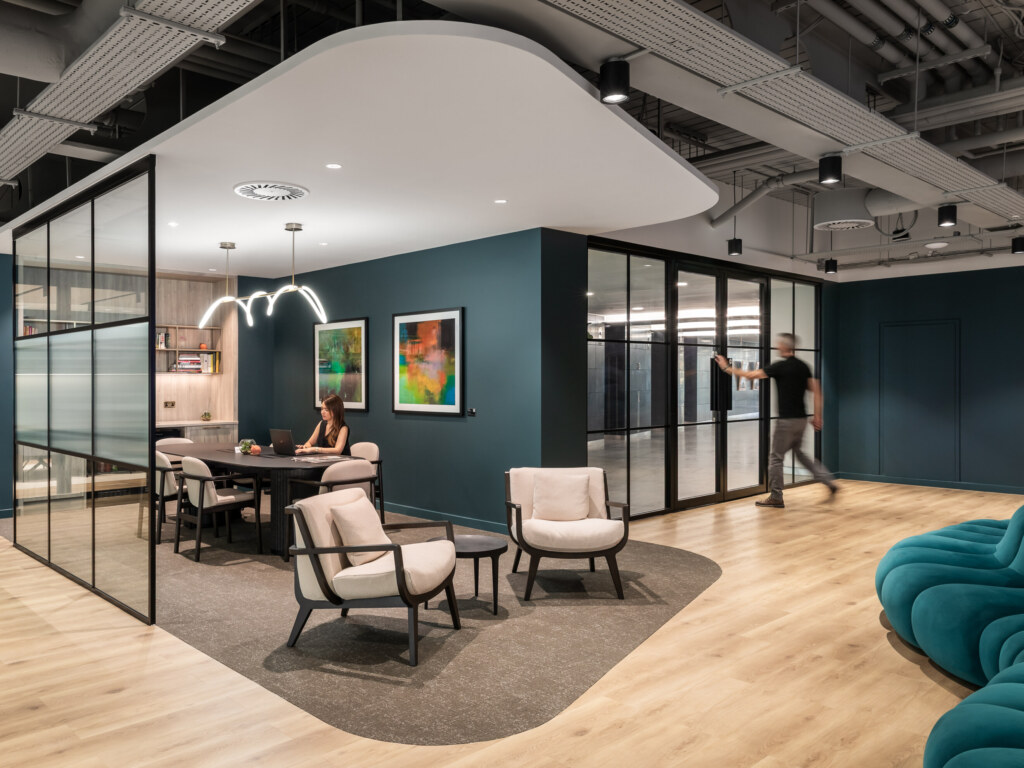
-
High Performance Workplace Guide
A number of these design trends are covered in our guide to creating a high-performance workplace. Take a look for a deeper dive into features like wellness spaces and designing for adaptability, including real-world examples and best practices for implementation.
Download now -
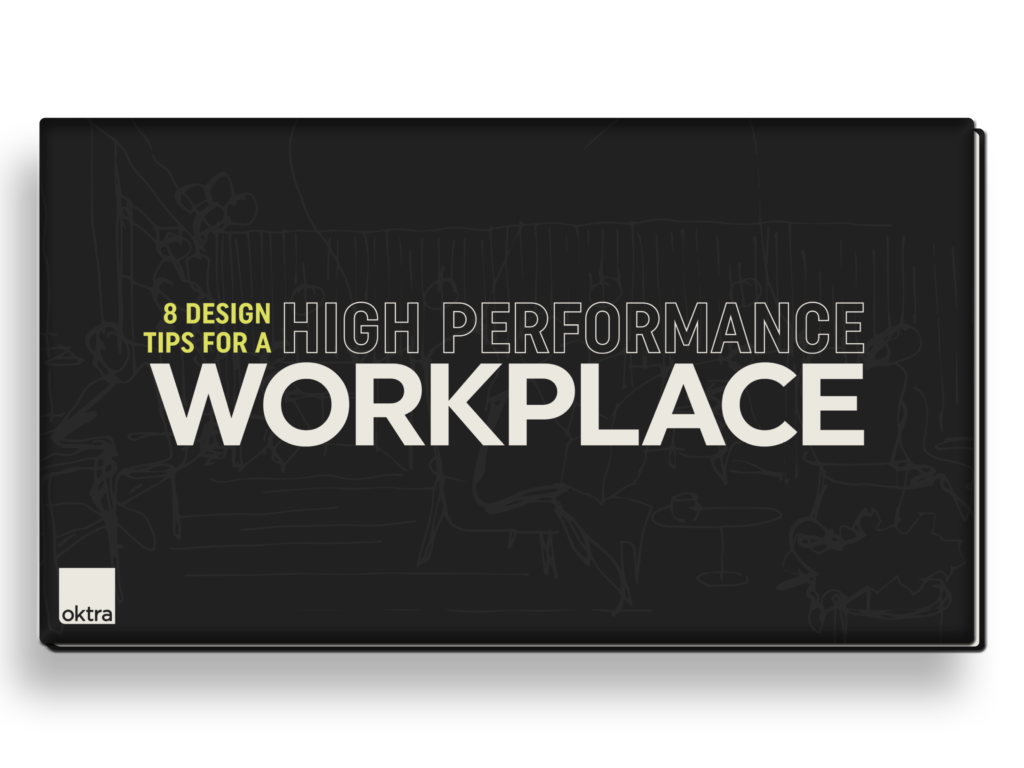
-
-
FAQs
-
What is corporate office interior design?
It’s the strategic creation of workplaces that reflect a company’s culture, support productivity, and adapt to modern working needs.
Why is sustainability important in office design?
It reduces environmental impact, supports ESG goals, and can lower operating costs.
What makes an office inclusive?
An inclusive office considers diverse physical, sensory, and neurodiverse needs through layouts, materials, and environmental controls.
What is a hospitality-led workplace?
A hospitality-led workplace uses service-oriented, welcoming design—like cafés, lounges, and concierge areas—to make the office a destination.
-
-
Get in touch
Speak to our design experts about your upcoming workplace project
020 7553 9500
info@oktra.co.uk
-
